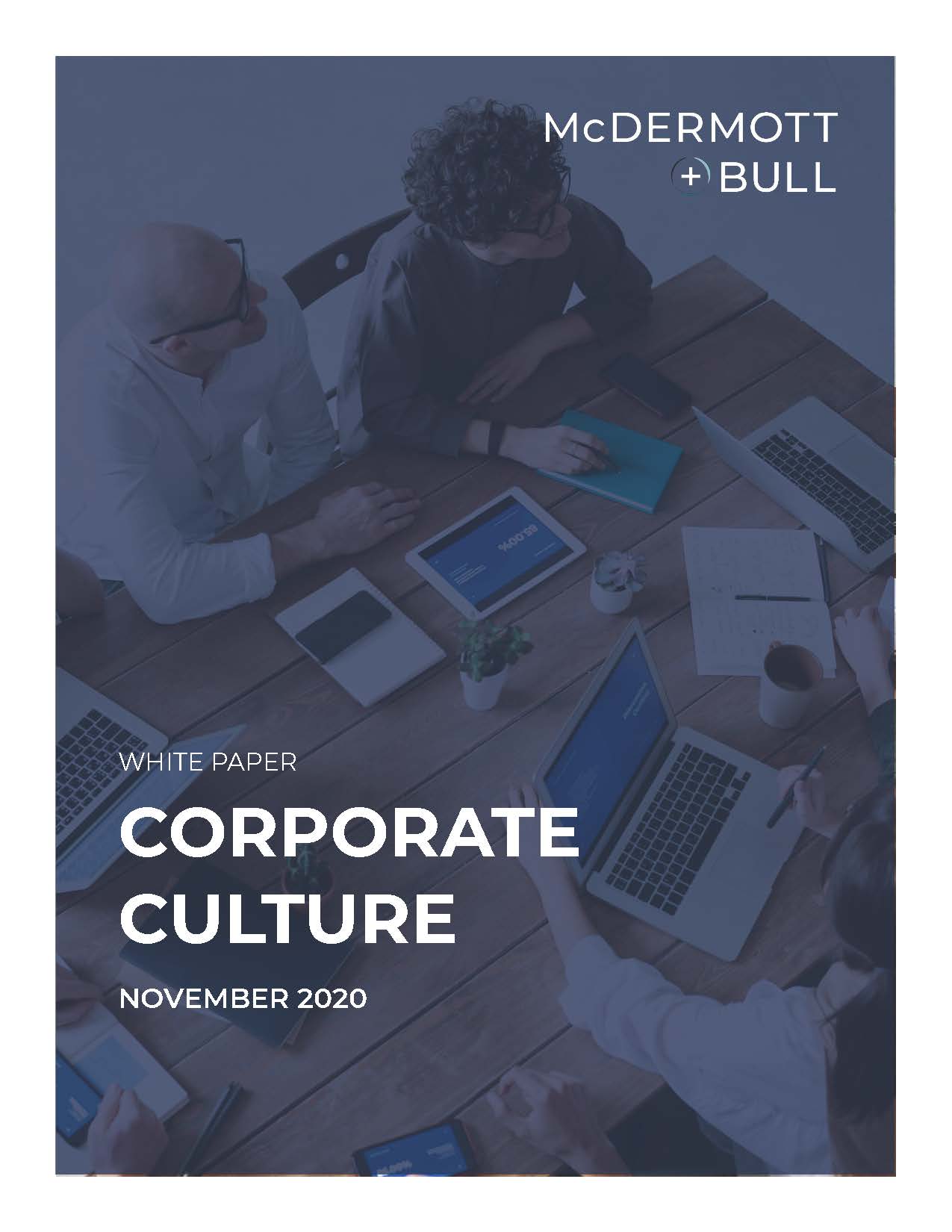CORPORATE CULTURE
I recently came across a photo on LinkedIn that made me smile. It was of a senior executive I had placed at a Goldman Sachs company having dinner with his wife and two other couples. His caption read:
How do you know when the balance shifted from work to life with friends from work? When you spend the evening talking about everything but work; now you are simply friends, not work friends.”
What immediately struck me about the photo was that I recognized not just one, but three people in it, because I had placed all three at the same firm: the Chief Operating Officer, Chief Investment Officer, and Head of Investment Advocacy. I found it comforting to see them content in their work lives as well as their social lives as they melded the two together.
Our need for social interaction is even more evident during this global pandemic, where most of us are working from home and connecting to each other via video meetings. It feels good to have friends to talk to, especially if those friends also work with us. Video calls allow us to see our work colleagues in a new light: as multi-dimensional humans at home with their families and pets. We’re learning about other aspects of their lives, not just the one-dimensional professional side we see at the office. Global companies too have recognized that working from home has been a success. A senior executive at a global bank told me his company’s decisions were dictated by science and data. When Coronavirus infections declined in the Northeast in June, the company gave employees the option of going back into the office. There was no mandate and they could decide to go back at their own comfort level. The reasoning behind the decision came from the CEO who thought that remote staff were missing out on ad hoc social interactions. A large part of the firm’s culture comes from human interaction where in-person meetings help with brain storming, relationship building, and generating ideas. The executive I spoke to chose to return to New York City two days a week and loves it. Young new business hires have been coming in too, eager to resume job mentoring. All safety precautions are in place and the office space is only occupied at 25% capacity.
RELYING ON RELATIONSHIPS
Often what gives us the impetus to make work friends is the corporate culture within the firm where we work. Culture is what drives employee commitment and the relationship between colleagues is what drives performance. Culture is a system of values, beliefs, and behaviors that shape how actual work gets done: “the way things work around here.”
Culture is what drives employee commitment and the relationship between colleagues is what drives performance.
In contrast, engagement is about employees’ level of commitment to an organization and their work: “how people feel about the way things work around here.” Both are critical to business performance, hiring, retention, and innovation. If employees respond positively to a corporate culture, it generally means they share a common value set and appreciate common traits, such as honesty, integrity, and fairness. In many cases, this can lead to a shared experience outside of the office, for example, playing a round of golf together, that in turn can help to reinforce a company’s corporate culture. Friendships with people we work side-by-side with may develop initially over lunch before evolving into dinner or drinks after work, and then to social or sporting events on the weekend. Some companies offer social clubs, outdoor clubs, and gender alliances which allow their employees to meet in a social setting.
HOW TO CULTIVATE A CULTURE
The key to cultivating a strong corporate culture comes from the top down, imposed by leaders who define what the culture is and then clearly articulate it to employees. What’s most challenging for leaders is to know where to start and how to focus on culture. “The Culture Factor” from the Harvard Business Review suggests organizations build a culture that aligns with people’s values. “Candidates are seeking workplaces where they can intertwine their beliefs with those of the company, and work together on a common vision of purpose and success,” it says. Studies have shown that organizations that take a proactive approach to creating a culture defined by meaningful work and deep employee engagement can outperform their peers. A 2018 edition of Global Boardroom Insights by KPMG states that one of the fundamental roles of leadership is to create and maintain a culture that reinforces the company’s core values, encourages employees to do the right thing, and helps drive the company’s long-term strategy. Culture, done well, can be a powerful driver of performance.
Candidates are seeking workplaces where they can intertwine their beliefs with those of the company, and work together on a common vision of purpose and success.
The Culture Factor, Harvard Business Review
A board of directors may support and maintain an ethical culture, while senior leadership can help shape and build a culture that unifies people around a common cause and governs how employees interact with one another. This pandemic has given us a true window to see inside how some corporate cultures operate. We have seen how firms have treated their employees: did they allow them to work from home? Did they furlough them, but with benefits still intact? Did they lay off staff?
Did they allow them to work from home?
Did they furlough them, but with benefits still intact?
Did they lay off staff?
I recently heard of a Fortune 500 company that is offering its employees extra vacation days and flexible working arrangements for primary care givers whose children are doing online school at home. These types of incentives garner good faith among employees and can help retain them.
DRIVING RESULTS
With the right cultural foundation in place, and by treating employees fairly, an organization can realize significant performance improvements. According to KPMG’s 2020 “Making Culture Transformation Happen,” senior leaders are recognizing the need for culture change to drive business performance. There may not be just one culture, but multiple cultures within a firm that drive the performance of its people and business results. “Cultures that have recently become even more critical these days in a distributed work environment are collaboration, resilience, high performance, agile, and ethics and compliance,” the authors state.
To make cultural transformation happen, they say, there are five key elements:
- A firm needs to define the business need it’s trying to achieve.
- Those people who have greater influence in driving the future culture need to be engaged from the outset.
- Focus on identifying “moments that matter.” For example, in a culture of ethics and compliance, a key moment that matters is when employees observe and report wrongdoing.
- Employees need to understand what they should be doing differently to be successful in the new culture.
- Understand what drivers already exist and how they might help or hurt progress. Look to embed new drivers to accelerate change and sustain the new culture.
ASSESSING CULTURE ALIGNMENT
From my point of view, assessing culture alignment is a critical element of the hiring process. Culture fit is a key trait we look for when recruiting senior executives. We need to be able to define an organization’s culture – its common values, goals, and practices – and see them reflected in a richly diverse workforce. A strong culture can produce employees with a well-tuned sense of direction and help create common definitions of success, so a company grows as a team. We need to find alignment between the personal values of our prospective candidates and the causes an organization supports. Part of my job is to assess candidates and predict how their personalities will adapt to the core beliefs, attitudes, and behaviors within an organization.
How dedicated are they?
What drives their career?
Are they ambitious?
Do they prefer a work-life balance?
When employees fit well into an organization, they tend to have greater job satisfaction and perform better at their job. Now that working from home has proven to be so successful, we can even access candidates from further afield to bring on additional remote talent.
Research shows that an engaged organizational culture results in increased performance levels. “Put simply,” says Dan Pontefract, CEO of the Pontefract Group, which helps organizations with culture, engagement, purpose, thinking, and becoming more humane, “an engaged culture marked by high levels of involvement, consistency, adaptability and a transparent mission, improves sales and customer satisfaction.”

ABOUT THE AUTHOR + FIRM
Brandon Biegenzahn is the President of McDermott + Bull, and the chair of the firm’s Financial Services Practice Group. Brandon is a corporate attorney who practiced with Sheppard, Mullin, Richter & Hampton, and Buchalter Nemer in their corporate finance departments. Brandon received his Bachelor of Arts from the University of Southern California and his Juris Doctorate from Penn State.
McDermott + Bull is a full-service executive search firm serving clients through its offices in North America and Europe. The Firm’s Financial Services Practice Group is a partner to an array of financial services firms including investment banks, commercial banks, private banks, credit unions, investment managers, institutional investors and fintech companies. The firm’s clients include the likes of Guggenheim Partners, Columbia Bank, Houlihan Lokey, Silicon Valley Bank, Golden 1 Credit Union, First Republic Bank, BNY Mellon, Moelis & Company, and Envestnet.


